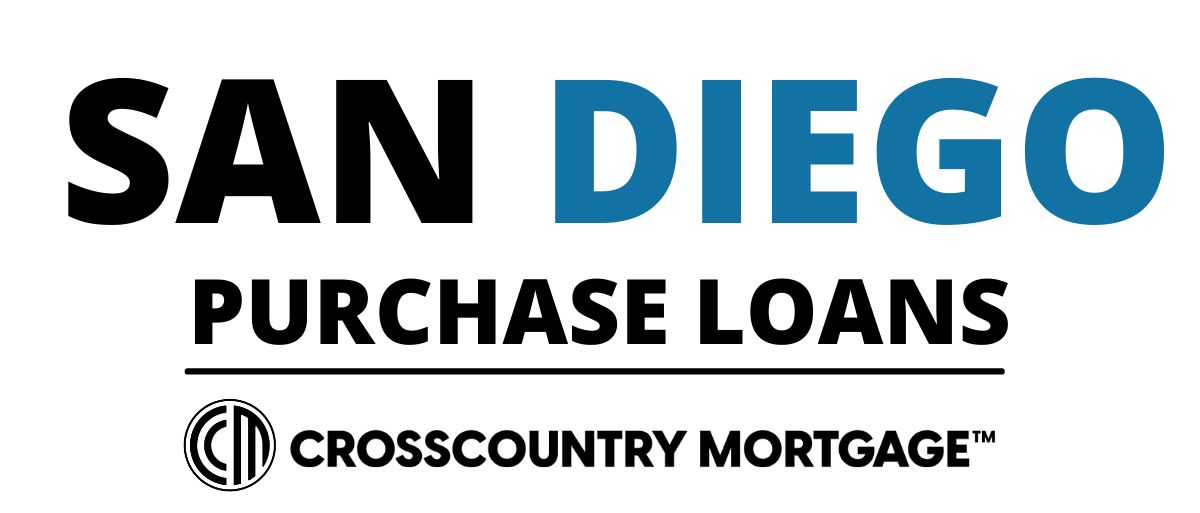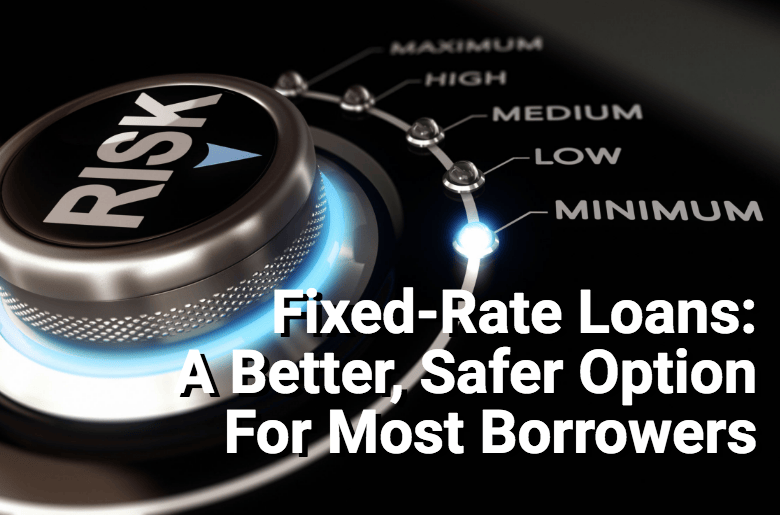There are a lot of decisions to make when it comes to buying a home. One of the most important is deciding between a fixed-rate and an adjustable-rate mortgage.
While adjustable-rate loans have their benefits, you’ll find that fixed-rate loans are usually the safest, making them well worth the added cost.
Why Fixed-Rate Loans are Better Options for Most Borrowers
Fixed-Rate Loans: A Brief Explanation
Fixed-rate loans are simply loans with interest rates that do not change. They can, by definition, include loans to pay for various expenses, including cars, equipment, and education, but they are commonly associated with mortgages. This is because mortgages also have the option of adjustable rates, while most other types of loans, such are student or auto, are almost always fixed-rate loans; there’s really no need to differentiate these loans as “fixed-rate” because it’s essentially a given.
When you borrow money for real estate, you are given the total amount needed to make the purchase. To ensure that the lender can make a profit (which keeps loans available), the loans come with interest, a small percentage added to the balance on a regular basis. There can be other fees, but interest is the largest addition to the loan. As you likely know, the higher the interest rate, the more expensive the loan will be. For this reason, it’s essential that you understand how rates work, how they change, and the difference between fixed-rate and adjustable-rate mortgages.
Mortgage loans can come with either variable interest rates or fixed rates. With an adjustable-rate mortgage (ARM), the loan’s interest rate will change over time, usually in alignment with the current market’s interest rates, which is set by various indexes. With a fixed rate, however, the interest is locked when the loan is made. No matter what the market does, your interest rate will stay the same for the entire duration. This is important to understand because interest rates will impact how much you pay on a monthly basis. With an ARM loan, you could pay more or less, depending on what the market does from year to year. However, a fixed-rate loan has a specific monthly total that will not change no matter what the market does.
If you want to know more about how interest rates impact monthly totals, as well as the total cost of the loan, use our Amortization Calculator. You’ll see that even a small adjustment in the interest can change the total cost of the loan by thousands of dollars.
Safer Loans, But they Do Come with a Cost
Generally speaking, fixed-rate loans are safer options for borrowers. When you use a fixed-rate loan, you know what you’re getting and you know to expect; you don’t have that luxury when you choose an ARM loan. Adjustable-rate mortgages have their advantages, but there are numerous stories of people who chose an ARM loan and were surprised when their rates went up.
But safety comes at a price. Fixed-rate loans tend to start with higher interest rates than ARM loans. You may find that the rate on a fixed mortgage loan is one or even two percentage points higher than a similar ARM loan. That can make a dramatic difference in the overall cost of the monthly payments, and this lower rate can make ARM loans tempting to numerous buyers.

ARM loans are far from perfect. Because the interest rate can be adjusted to fit the current market, you really don’t know how much you will be paying from year to year. Rate increases, payments, and total costs are often capped with ARM loans, but you still don’t know what to expect from year to year, and if you’re looking at a 30-year loan, there’s a lot of unknowns.
They may cost more upfront, but fixed-rate loans give you peace of mind knowing that you have a specific, defined, affordable monthly payment. It will not go down like an ARM loan could, but it’s guaranteed not to go up. This peace of mind can be priceless.
When Can ARM Loans Be Appropriate?
While fixed-rate loans are safer and usually the best choice, there are a few situations when borrowers may want to consider an ARM loan.
When Rates are Falling
A fixed rate may be the wrong choice for your needs if interest rates are falling or are expected to fall. When interest rates rise, the monthly payments for an ARM loan go up, but when they fall, the payments will decline. You’ll miss this advantage if you choose a fixed-rate loan. If interest rates are at an all-time high and can be expected (within reason) to go down, then it might make sense to use an adjustable rate, but you will assume the risk of rates going higher.
Refinancing
Let’s say you choose a fixed-rate loan and five years later interest rates are significantly lower. Are you stuck? If you keep the loan you have, then yes. But if you refinance, you can take advantage of the lower rates. Refinancing, however, comes with costs, so it’s usually best for people who have high interest and a lot of time left on their current mortgage.
Short-Term Commitment
Fixed-rate loans can be less appealing if you plan to sell the property and end the mortgage after a short period. In this case, you could likely benefit for an ARM loan, which has lower costs for the first year or two.
Understand the Different Types of Fixed-Rate Loans
Fixed-rate loans come in various types. It’s best to talk with a qualified lending officer, but these are a few of the most common types that you’ll find available. The standard fixed-rate loan is a 30-year mortgage, but you can also find them with 15-year terms, 20-year terms, and even 40-year terms.
If you have questions about the best type of loan for your specific needs, contact San Diego Purchase Loans. We’ll help you understand the various options so you can make the right choice for your future!


